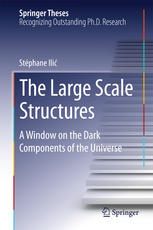

Most ebook files are in PDF format, so you can easily read them using various software such as Foxit Reader or directly on the Google Chrome browser.
Some ebook files are released by publishers in other formats such as .awz, .mobi, .epub, .fb2, etc. You may need to install specific software to read these formats on mobile/PC, such as Calibre.
Please read the tutorial at this link: https://ebookbell.com/faq
We offer FREE conversion to the popular formats you request; however, this may take some time. Therefore, right after payment, please email us, and we will try to provide the service as quickly as possible.
For some exceptional file formats or broken links (if any), please refrain from opening any disputes. Instead, email us first, and we will try to assist within a maximum of 6 hours.
EbookBell Team

5.0
90 reviewsDark Energy and Dark Matter are among the greatest mysteries in modern cosmology. The present work explores in depth how large cosmic structures can help us unveil the nature of these components of the Universe. One the one hand, it focuses on a signature that Dark Energy imprints on the Cosmic Microwave Background through its impact on the time-evolution of gravitational potentials: the integrated Sachs-Wolfe (iSW) effect. Another cosmological background, the Cosmic Infrared Background, is considered for the first time in the study of the iSW effect and demonstrated to be a highly efficient and promising tracer. Changing the perspective on the problem, the use of superstructures for iSW detection is then extensively reviewed: using precise solutions to Einstein’s general relativity equations, the full iSW effect is computed, especially due to the cosmic voids predicted by the theory. Using measurements from the most recent data, it is subsequently shown how the iSW probes the solidity of the cosmological standard model. On the topic of Dark Matter, an original study is presented, showing that temperature measurements of the intergalactic medium shed light on the nature of Dark Matter particles, providing the tightest constraints on their decay properties.